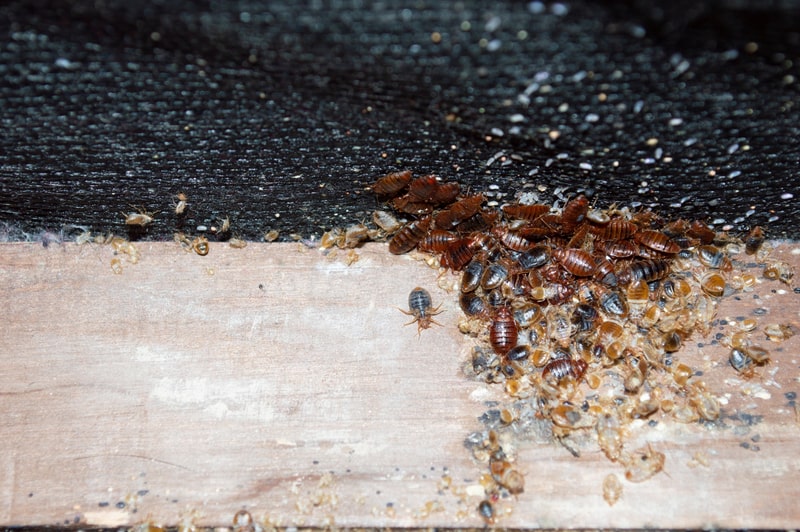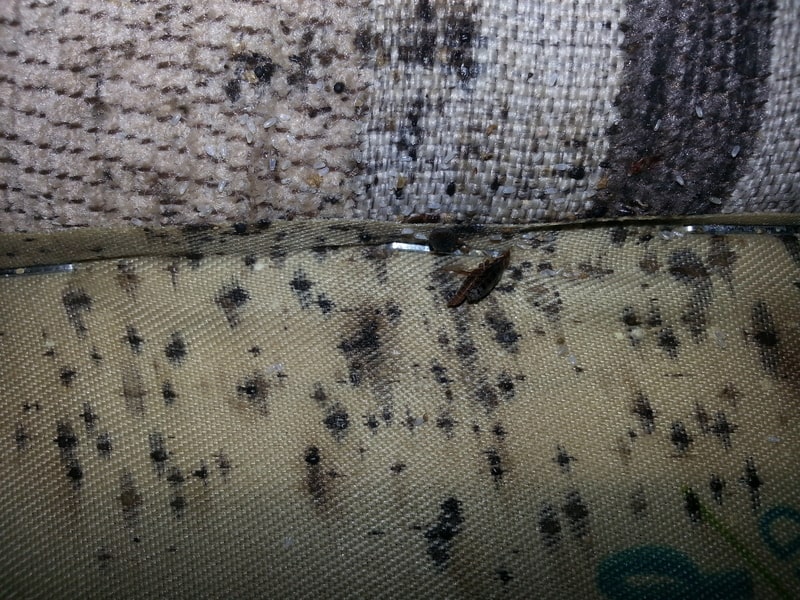
Bed bugs are blood-sucking pests that can make your life miserable. Contrary to a popular belief, bed bugs don't just live in unsanitary homes. They can readily settle anywhere they can feed.
Dealing with these pests in a timely manner before a bed bug infestation spreads can minimize its adverse effects and help improve your quality of life.
Let's take a closer look at bed bug infestation signs and treatment options.
What is a bed bug infestation?
A bed bug infestation is an invasion of these pests in your home. Besides being inconvenient and unpleasant, it can lead to some possible health consequences:
- Allergic reactions that result in itching, hives, or in rare cases, anaphylaxis
- Anxiety
- Insomnia
While these insects don't carry pathogens that spread diseases, a bite can leave your skin vulnerable to various infections due to scratching some of the itchy welts bed bugs can leave behind.
You may not know you have bed bugs until you face a serious infestation. Although newly hatched bed bugs are the size of a pin head and translucent before they feed, adult bed bugs that have not fed are very small -- approximately the size of an apple seed. Their reddish-brown color allows them to easily blend with furniture. It doesn't help that they are mostly active at night when you are likely to be sleeping.
Do a few bed bugs mean that you have an infestation?
When you find one or two bed bugs in a room, it may not seem like a problem. However, given that bed bugs reproduce quickly -- with the ability to lay between one and seven eggs per day after feeding under optimal conditions, seeing even one bed bug could mean you may be on your way towards an infestation, especially if the single bed bug is an inseminated female.
Bed bugs are avid travelers. They can hide in your luggage, arrive in furniture, and move around on your clothing. If by chance you bring home one pregnant female, the next day, you can end up with at least five bed bugs. Throughout its lifetime, a bed bug can lay up to 250 eggs. Without timely treatment, a bed bug infestation can start to become unmanageable.
What are the signs of a bed bug infestation?
From spots on your bedding to telltale bites on exposed parts of skin left uncovered while sleeping, these are just a few of the more common bed bug infestation signs. Bed bugs can be hard to spot due to their small size, particularly if they have not fed in awhile. With that in mind, it's important to watch for these warning signs that you might have a bed bug infestation on your hands:
Bites
Bites may be one of the first signs of a bed bug infestation to spot. However, because not everyone reacts to bed bug bites, they aren't the only sign you should look for. If you have a reaction to a bed bug bite, you could notice enlarged bite marks and swelling. You may disregard the problem if it happens once, but consistent bite marks require your close attention.
Bed bug bites may be:
- Red in color with a darker red spot in the middle of the bite
- Itchy
- Form a pattern
- Located on the upper body (face, neck, arms, hands, and shoulders)
If you have an allergic reaction to a bed bug bite, you may experience severe itching, swelling, and hives. If such a reaction occurs, seek immediate medical advice.
Spots on the mattress and sheets
While it may be hard to see an actual bed bug, be on the lookout for some of the signs that it leaves behind. These include:
- lood stains – Once the bed bug finishes its blood meal, the bites may seep tiny drops of blood. This can result in small, pin-prick sized blood stains on your sheets, mattress and pillows.
- Fecal spots – Bed bugs can leave tiny brown or rust-colored excrement on sheets, mattresses, and walls.
- Shed skin – If you discover a bed bug hiding spot, you may find fecal spots, egg shells and shed skin.

Odors
Bed bugs release a variety of scents. When there is an infestation and a significant population of bed bugs in your home, the odor can become intense. Although you would likely see a bed bug infestation long before you smell it, if you have highly developed olfactory senses and notice an unusual, musty smell in your room, bed bugs may be the culprit.
Bed bug odor isn't always offensive. It may even be sweet. However, as the number of pests in your room increases, your olfactory senses may start protesting. Coupled with other signs of a bed bug infestation, a strange odor should raise a red flag.
How do I treat a bed bug infestation?
No matter how small it may appear on the surface, a bed bug infestation requires immediate attention. Since these pests can reproduce quickly, delaying action on your bed bug problem could cause serious consequences.
While it's ill-advised to tackle a bed bug infestation on your own, there are steps you can take to reduce the bed bug population in your home.
- Wash and dry your bed sheets and clothing. If you see blood spots or fecal matter from a bed bug, wash and dry your bed sheets and clothing according to manufacturer's instructions to be sure high heat will not damage the fabric. It's recommended to use a temperature of at least 120 degrees. Bed bugs cannot withstand the heat of a hot dryer longer than 30 minutes.
- Invest in bed bug encasements for your mattress. One effective method to minimize bed bugs that many may be unaware of is to use specially designed bed bug encasements that can fit over a mattress or box spring. These coverings help to prevent bed bugs from nesting in your mattress.
- Vacuum thoroughly. Vacuum your upholstery, mattress, baseboards and other surfaces where bed bugs may be camping out. Once you've vacuumed, be sure to empty your vacuum cleaner outside of the house and properly dispose of your vacuum bag outdoors in the trash.
Some individuals make the mistake of using over-the-counter bed bug repellents. These only work for a couple of hours and don't usually bother bed bugs. Other homeowners sometimes throw out mattresses and bedding.
While bed bugs often strike when a person is asleep or resting in bed, making it easier for them to feed on a target that's not moving, these pests can also live on furniture, picture frames, upholstery and other places in your home.
Call Terminix to help put your bed bug problem to rest
It's easy to confuse a bed bug infestation with other pest infestations. If this happens, you may be employing the wrong control techniques. The only way to be sure that you have bed bugs is to hire professional bed bug control experts.
Professional bed bug control involves a comprehensive approach that's tailored to the infestation at hand, using a variety of techniques that may include heat, as well as other methods. Your bed bug control professional will visit your home to first inspect and diagnose the problem before recommending the most effective treatment methods to help get rid of bed bugs.
At Terminix, we have 90+ years of experience helping property owners battle bed bug infestations. To learn more, please contact us today.



